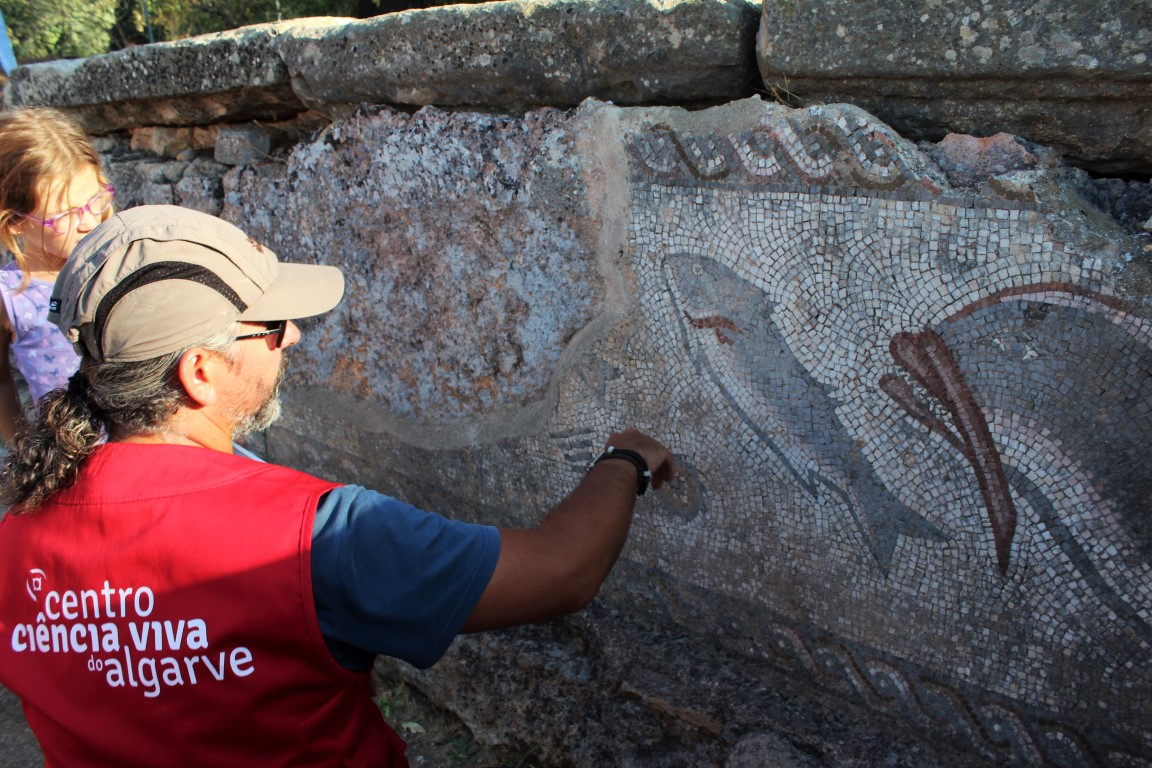
Today they may just be ruins, often difficult to understand, but about two thousand years ago there was life in Milreu, Estoi (Faro). Going back in time, taking a ride from what was the work of the Romans, is the motto for a trip that includes paintings in lime, the manufacture of ointments, bread, wine and even fish.
Thus, with art, but also science, the European Heritage Days were marked last Sunday, 24 September, in Milreu.
In a stall, next to the water point and the temple, was Barroca, a company of cultural and tourist products. Those who arrived there found paints, brushes, pencils, drawings and a base made of lime. The challenge was simple (or appeared to be): reproduce images of the mosaics that are still seen in Milreu.
The responsible Susana Calado Martins explained and gave tips to the participants. After chopping the lime, the first step, came another more difficult: painting. For this purpose, paints were used «made from marble powder, lime paste, water and mineral pigment», explained Susana Martins.
The Romans also used this formula in their inks – or something very similar. In fact, in Milreu there is evidence of the presence of lime in binding mortars in the construction of buildings, but also in finer and more delicate mortars for coverings and decorations.
For Marco Santos, also from Barroca, his presence there had the great advantage of «raising people's awareness of the importance of these materials that have been forgotten, but which for four decades were still used».
Lime painting initiatives are not new for Barroca, but it was the first time that they did it "in a symbolic place", said Susana Calado Martins.
Entitled “From knowing to doing: a Roman bio-experience in labor”, the initiative wanted to show, with playful and practical tasks, what the daily life of the Romans was like.
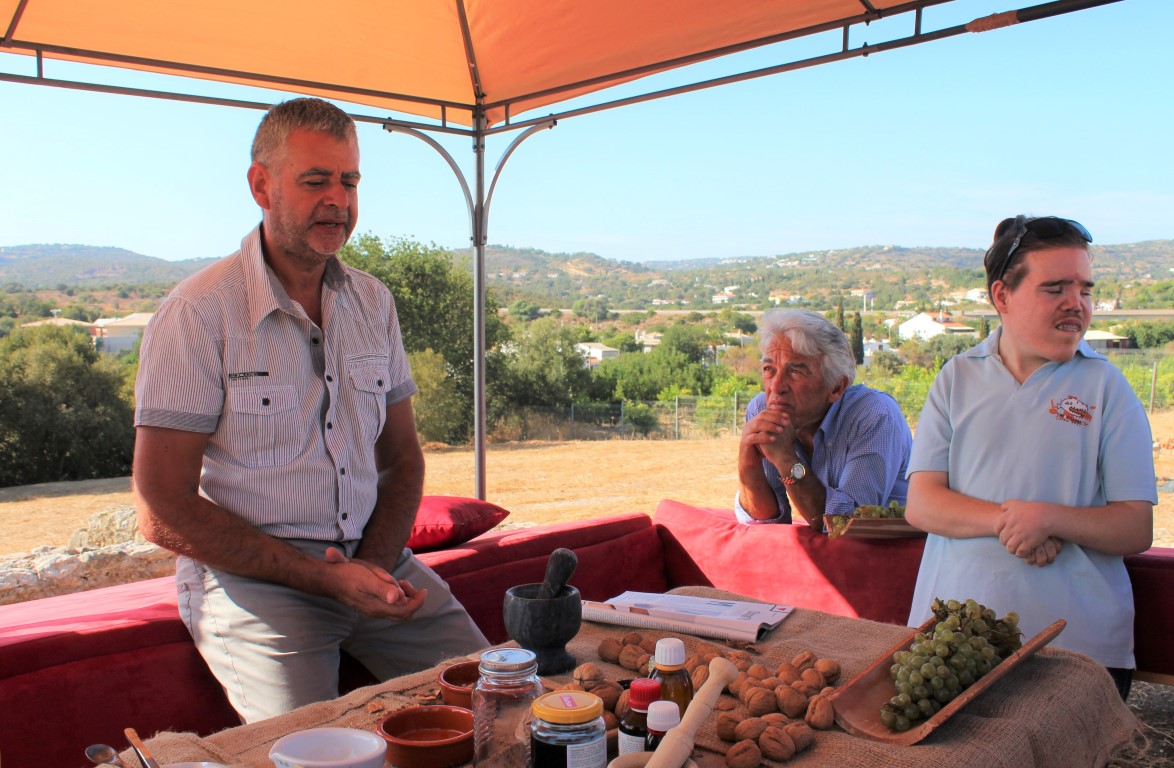
And if today's beauty products, such as perfumes, are something appreciated, they were also appreciated thousands of years ago. The ointments were really luxury items and their use was even a factor of social differentiation.
In the area of triclinium (dining room), in the villa Milreu's proposal was to understand how these ointments were manufactured. To this end, Professor Amadeu Brigas, from the University of Algarve, had at his disposal some of the ingredients that were used.
Namely: oil, nut, ethanol and even ash, which made the ointment thicker and exfoliating. "The base of any cream was always fat, something watery, and mix well," he explained.
Then, taking into account the purpose, ingredients were added. For example, if the objective was to smell good, limonene was used, which gave a pleasant lemony aroma. And those who participated in this initiative were able to prove it.
The journey is not over yet. After the beauty, it was time for food. In what is now Milreu's rural house (much later than Roman times) there are traces of a mill made of rods, which was used for the production of oil, a product very appreciated and used by the Romans.
At a small stand, just outside the house, there was no lack of oil, but also bread made only with spelled, a cereal that the Romans also used, and grapes. The flour for bread was made in a millstone, as exemplified by Emanuel Reis, from the Centro Ciência Viva do Algarve, responsible for this initiative.
The bread was often soaked in oil and, who knows… accompanied by fish? It could be: what is certain is that in Milreu there are dozens of fish, portrayed in the mosaics, formed by thousands of tesserae, small colored stones. Miguel Rodrigues, from CCV Algarve, was the guide on a visit to some of these mosaics.
"In principle, these are fish that the Romans already knew and that's why they are represented here," he explained. In the ruins, there are representations of fish that appear to be snappers and sea bass, but also of other marine beings, such as dolphins, sea urchins and squid.
And what is the reason why there are fish represented in Milreu? Cristina Garcia, from the Regional Directorate of Culture of the Algarve (DRCAlg), points out two versions. The first: “there are those who defend that the owner would be an industrialist in the fish sector and here he received business people”.
The second believes that the mosaics want to "transmit an idea of well-being", even because the fish represented are "happy".
Basically, all this epic for Roman times wanted to "show that there is also life, beyond what is seen", illustrated Cristina Veiga-Pires, director of the Centro Ciência Viva do Algarve, main promoter of the initiative, in statements to Sul Informação.
Alexandra Gonçalves, regional director of Culture, was also present, not least because Milreu is one of the monuments under the responsibility of DRCAlg. “With this initiative, we realized how everything was done at the time. Reproducing these experiences is going back to the past and bringing people to the place where it all happened, demonstrating how technology has evolved», he told our newspaper.
With paintings, the manufacture of ointments or the explanation of fish in mosaics, we learned about Roman life. «This always has a pedagogical function», stressed Alexandra Gonçalves.
If you're interested, know that there's still time to experience everything in the first person. This is because, next Sunday, the 1st of October, the initiative takes place again in Milreu, but instead of work, it will be dedicated to leisure. And without uncovering the veil too much, get to know that there will be tea parties and even a game.
The initiative “From knowing how to do: a Roman bio-experience at work” took place within the scope of DiVaM – program for the Promotion and Valorization of Monuments, promoted by the Regional Directorate of Culture of the Algarve.
Photos: Pedro Lemos | Sul Informação
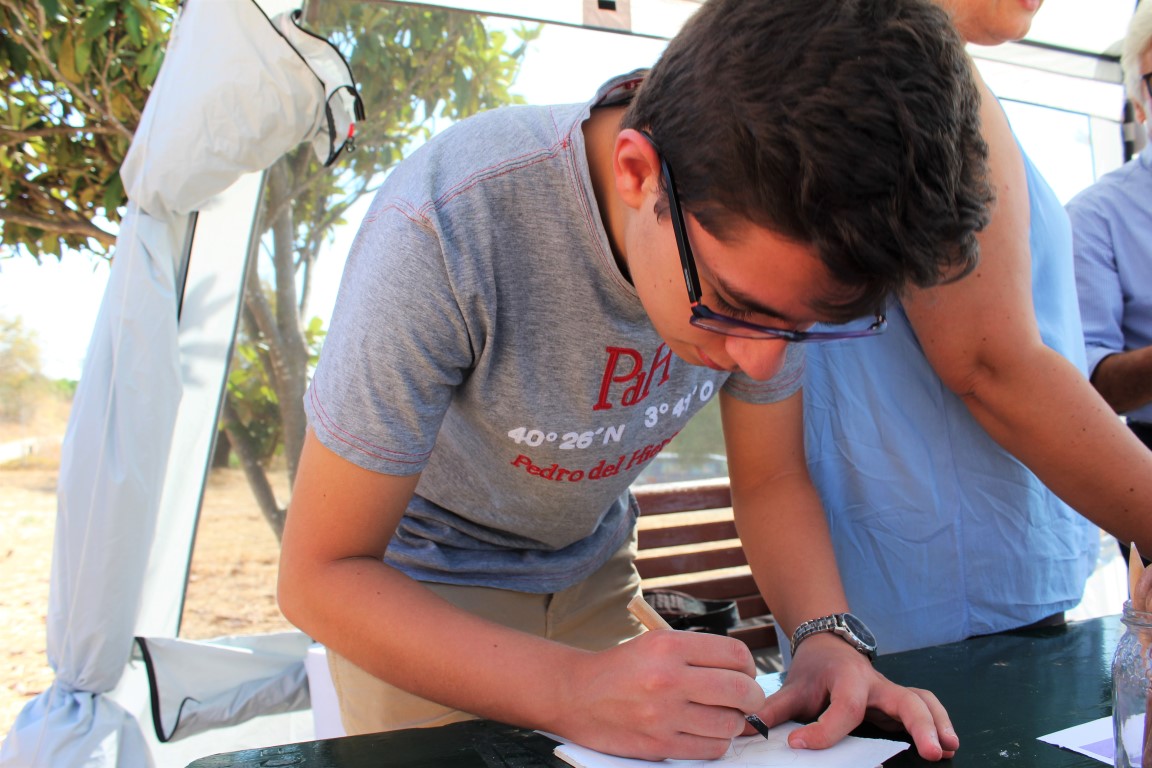
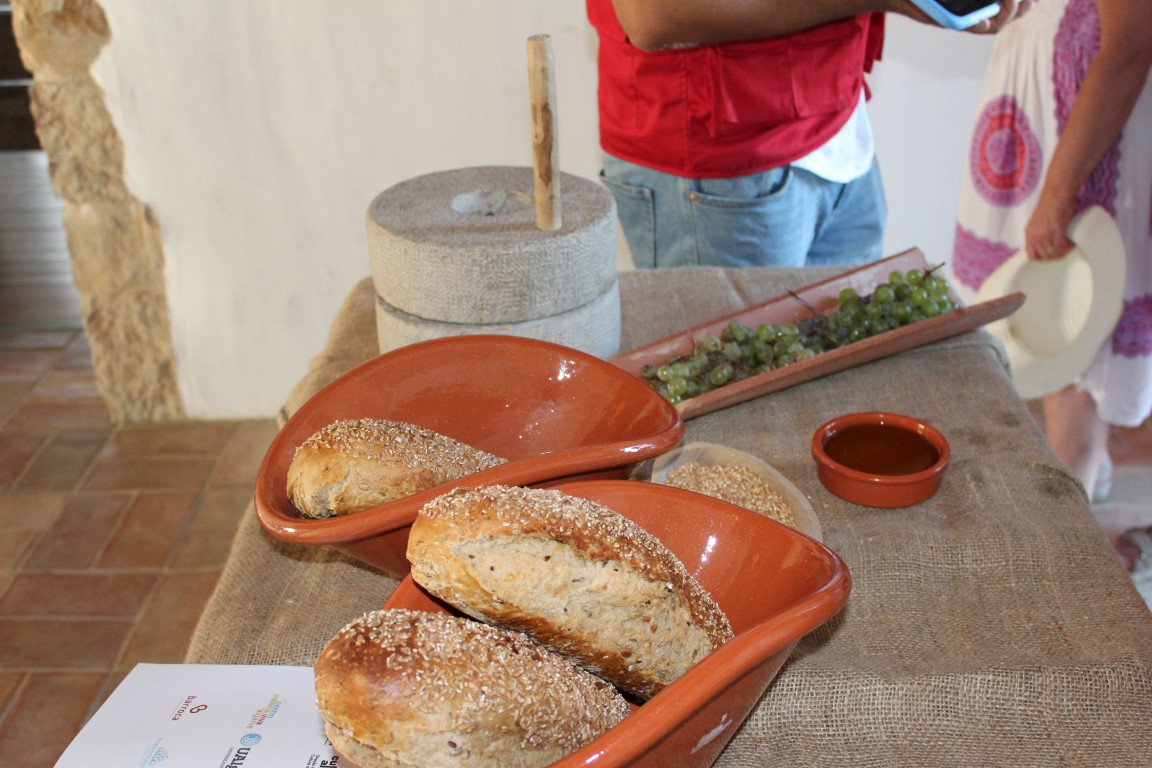
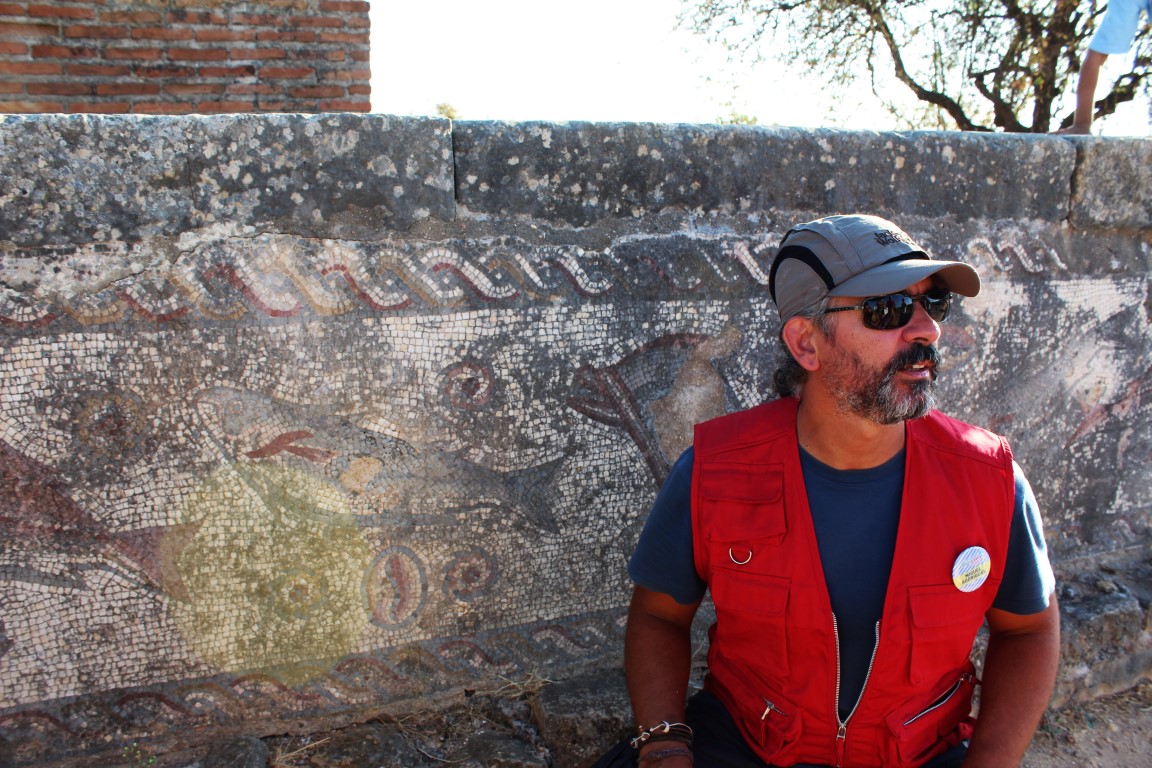
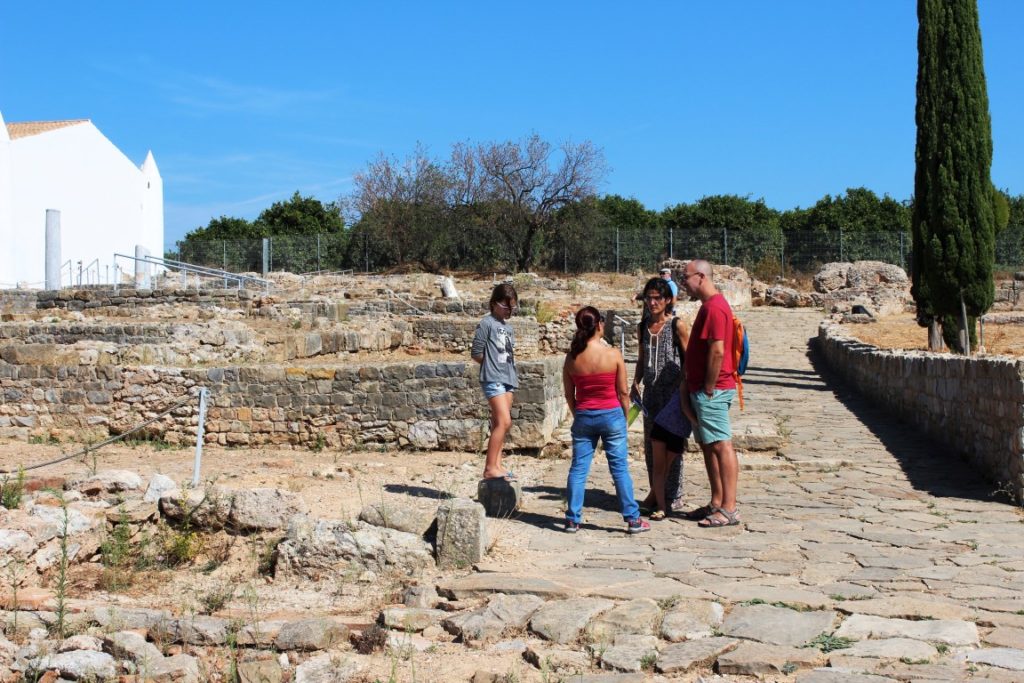
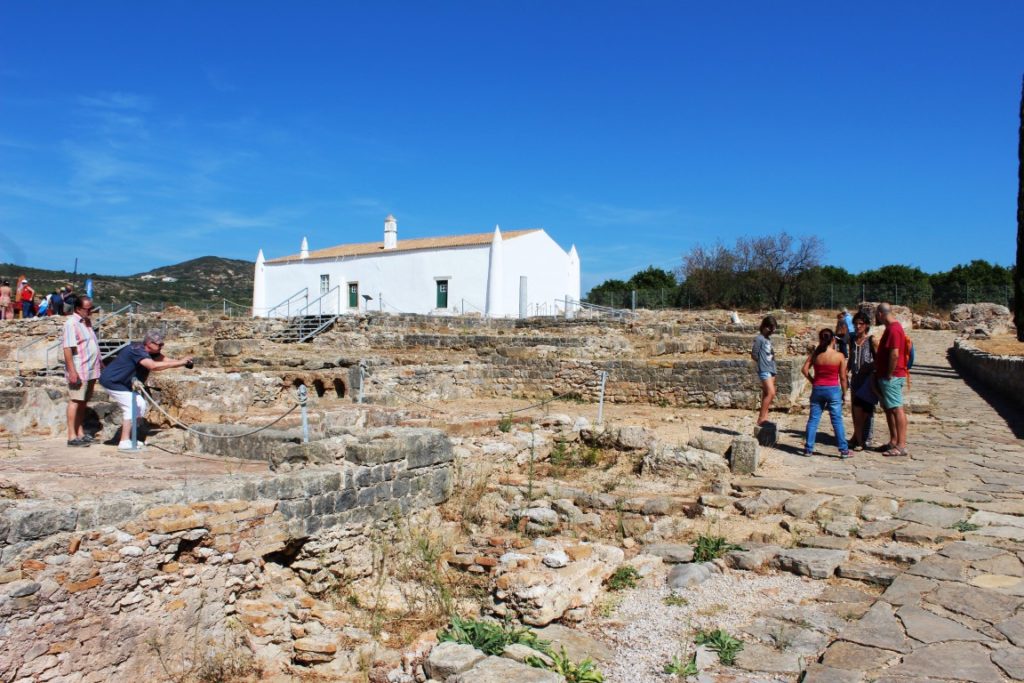
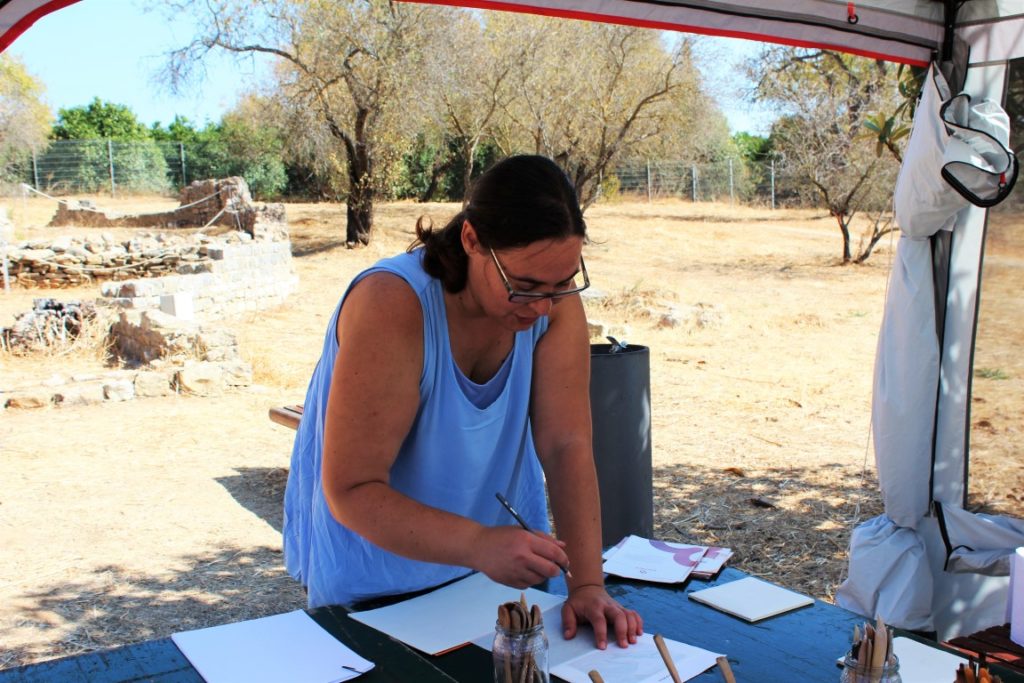
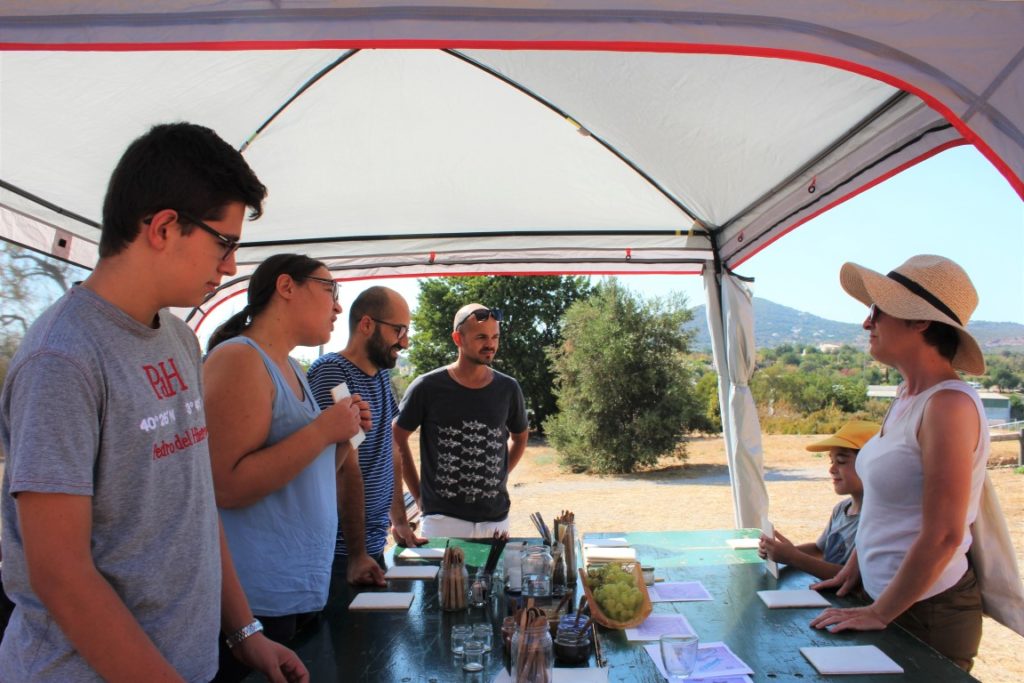
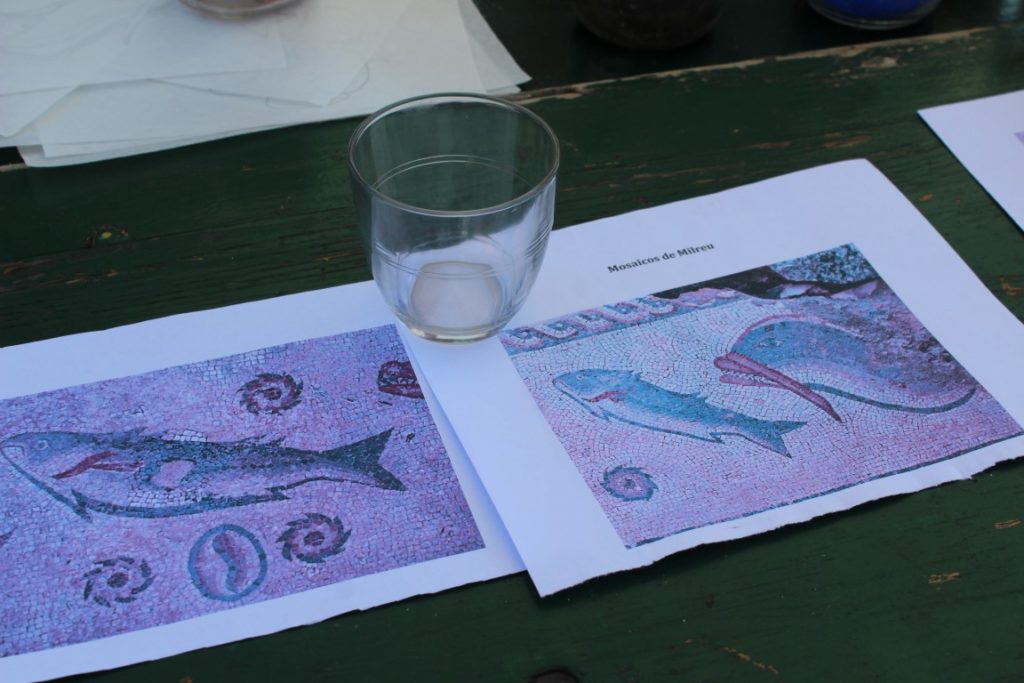
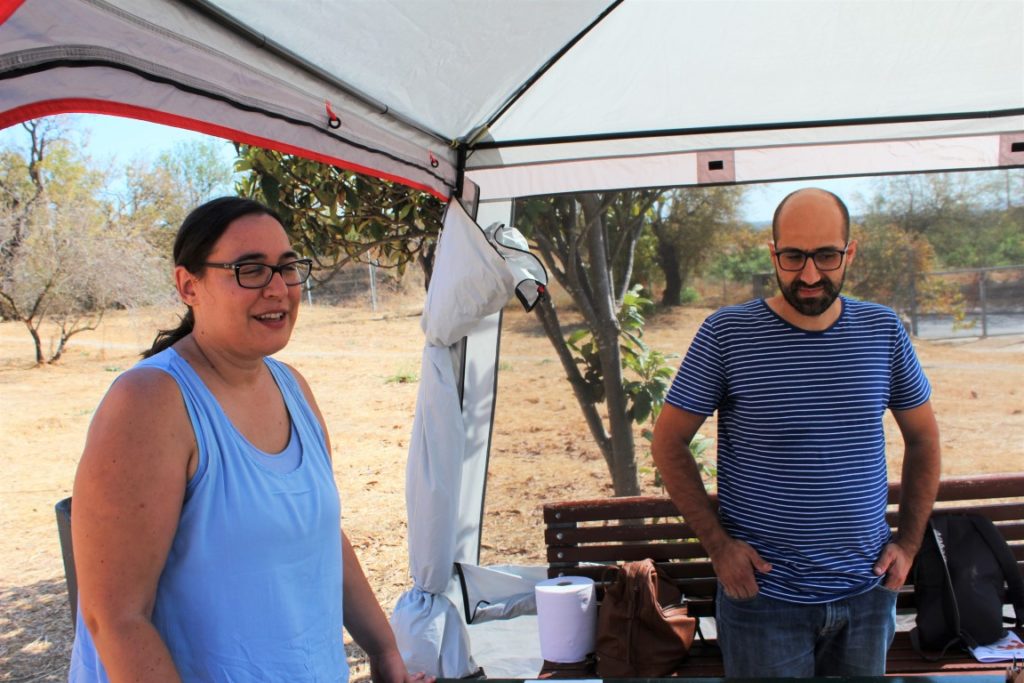
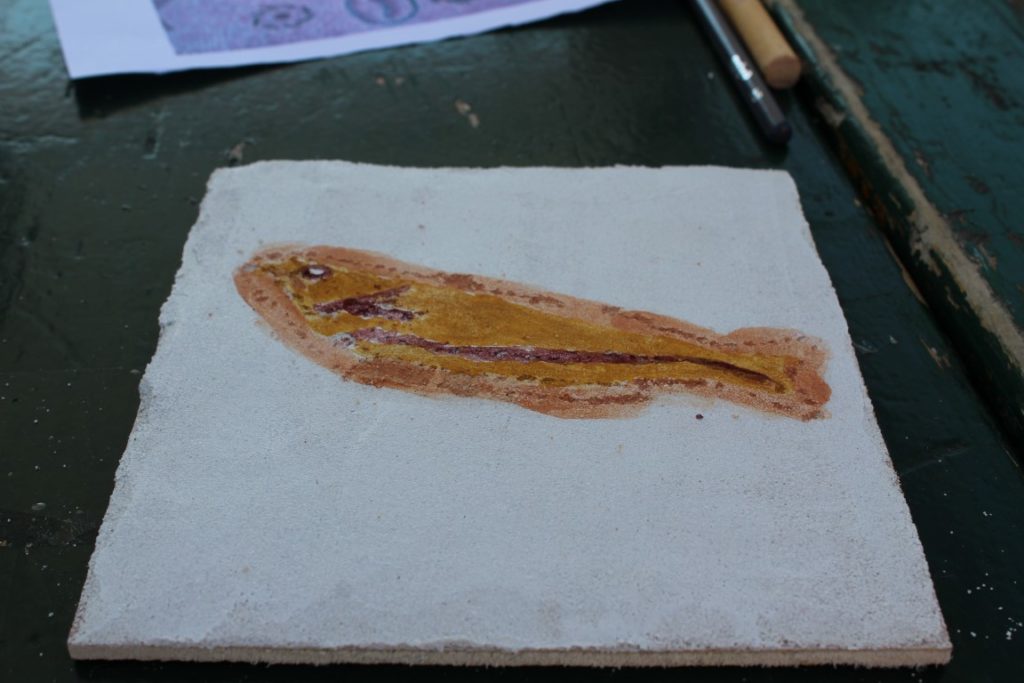
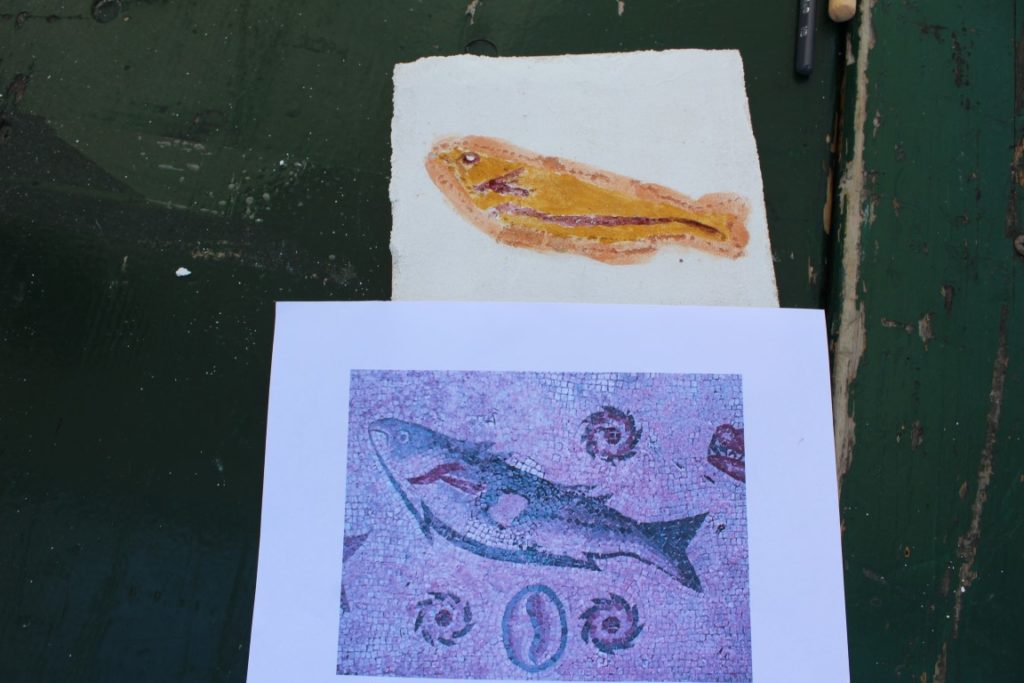
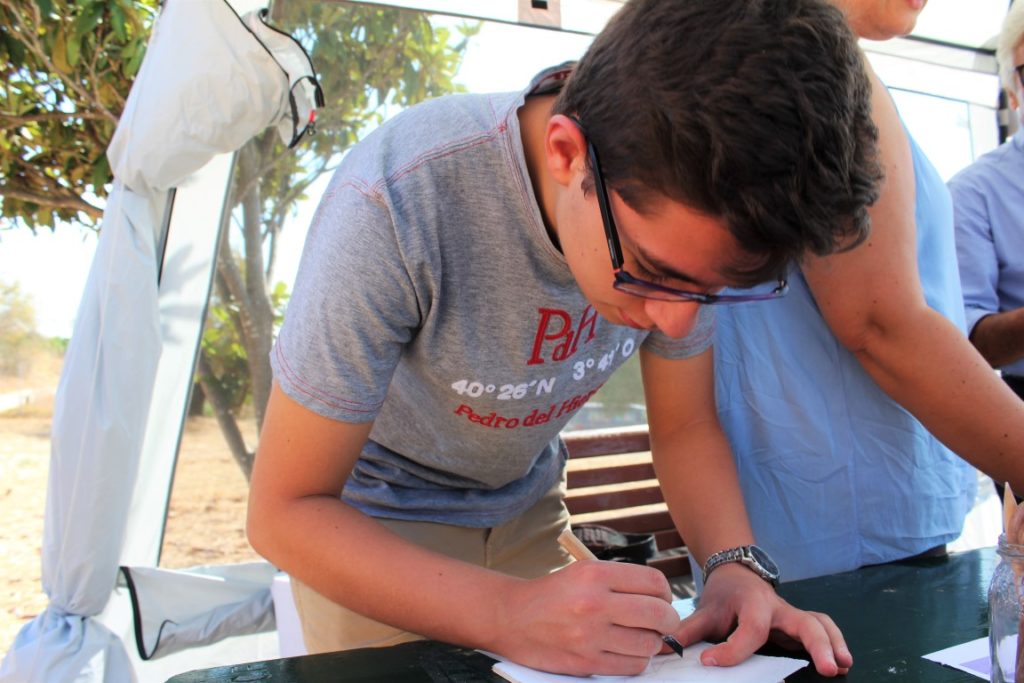
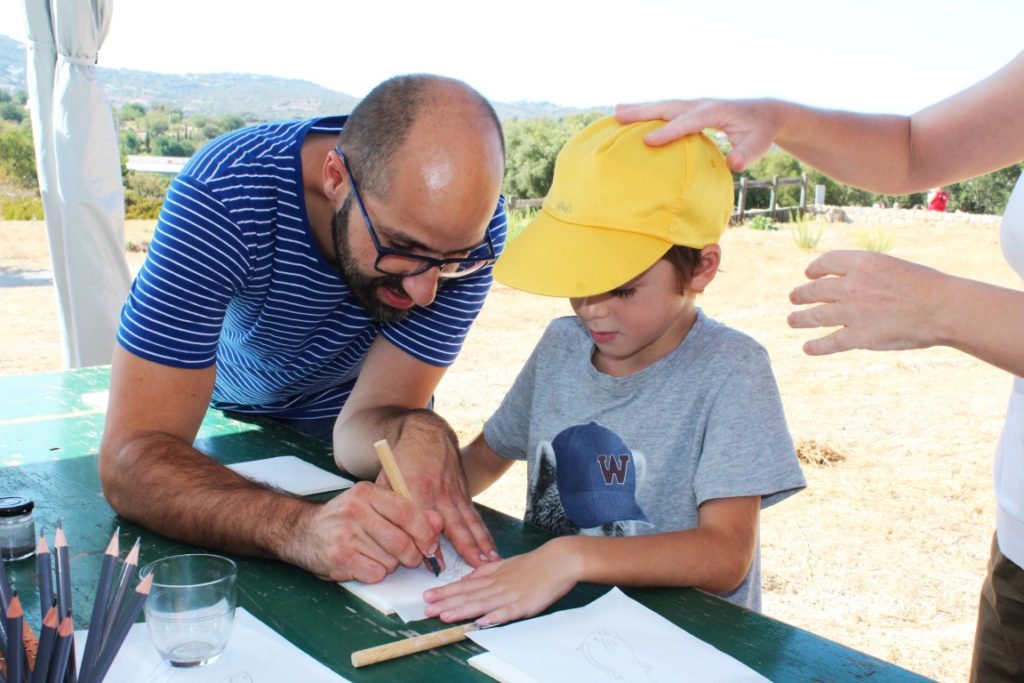
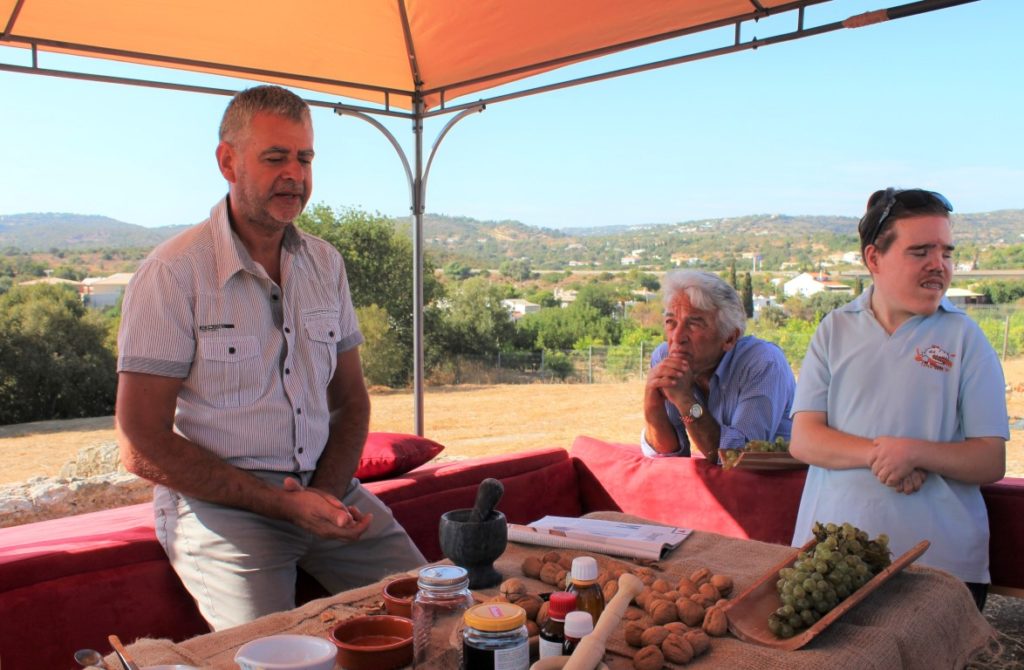
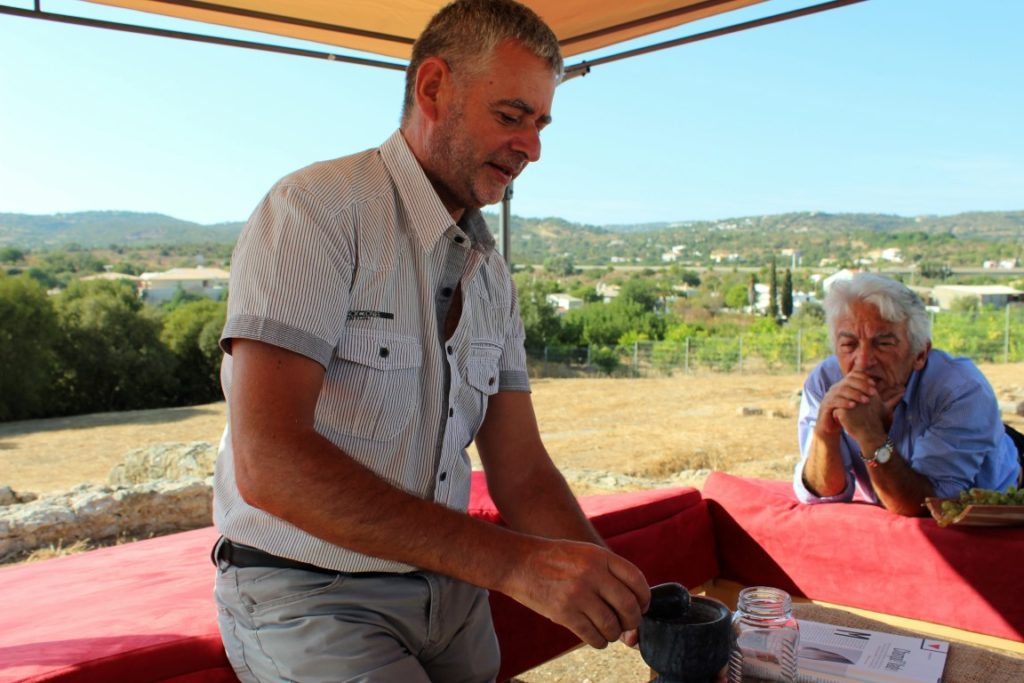
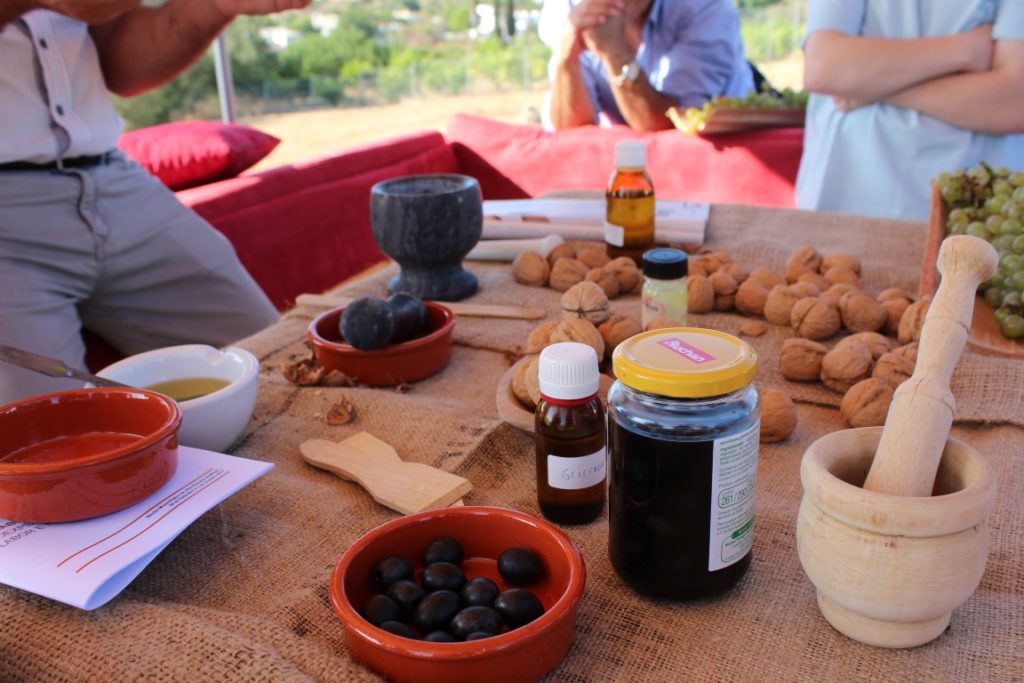
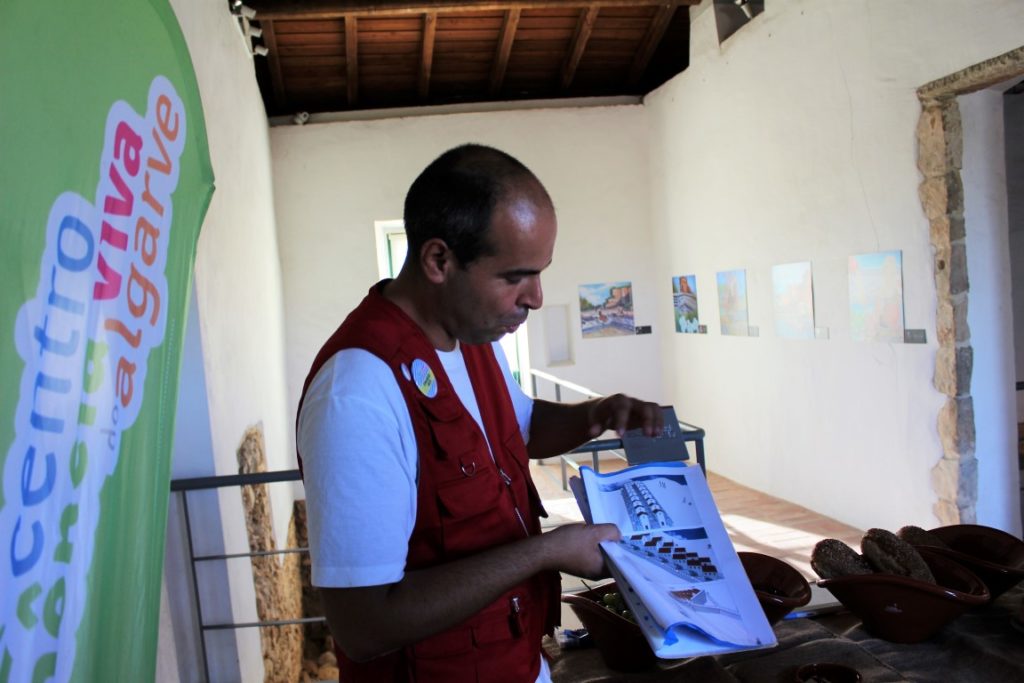
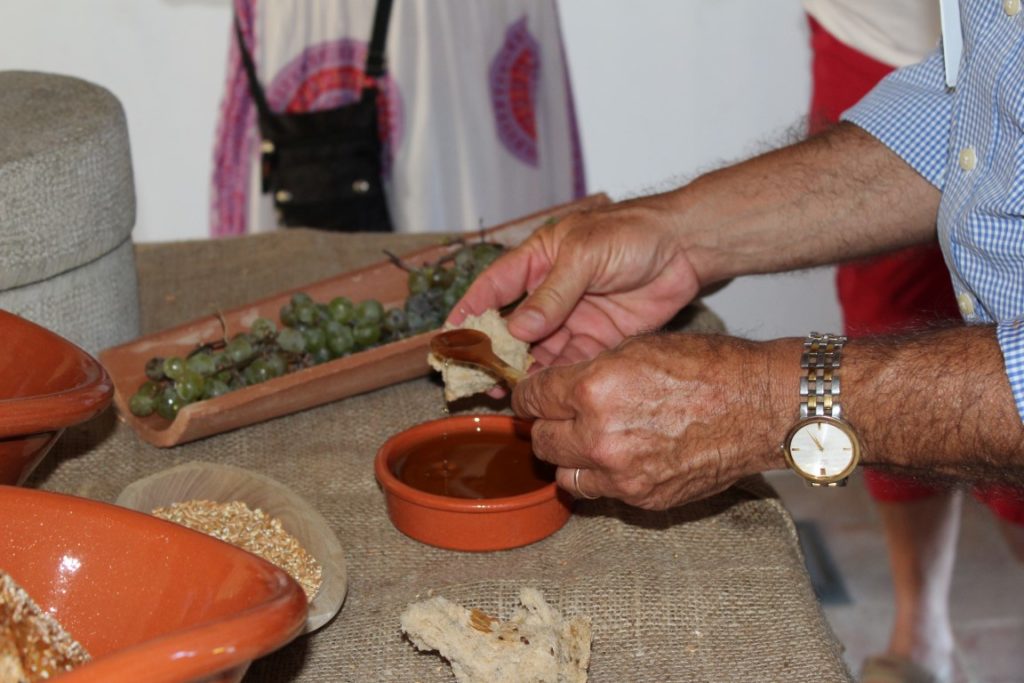
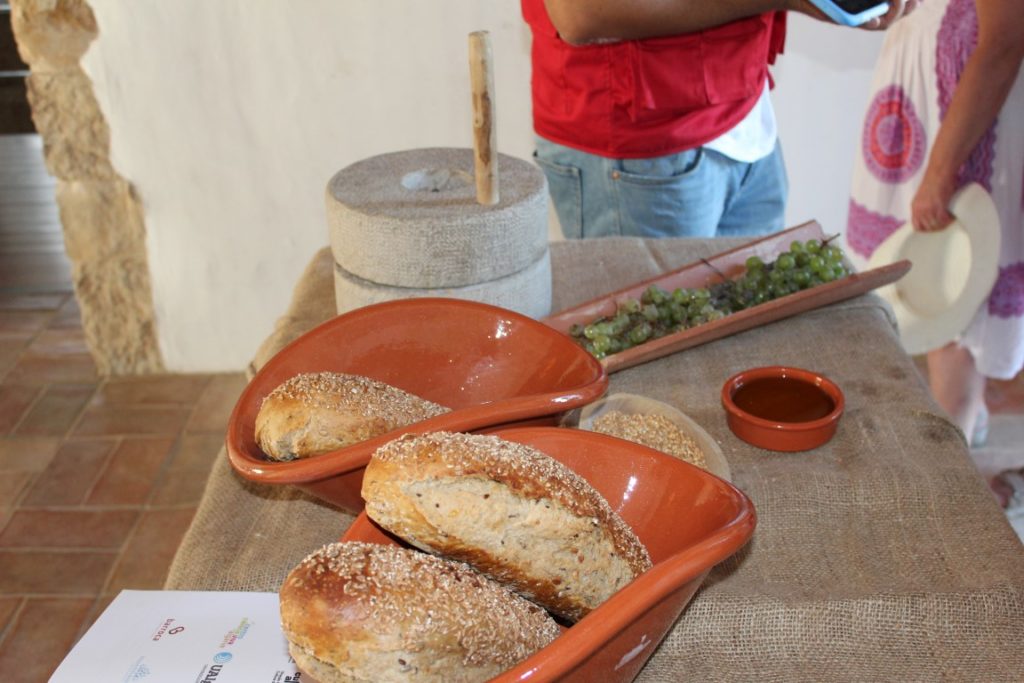
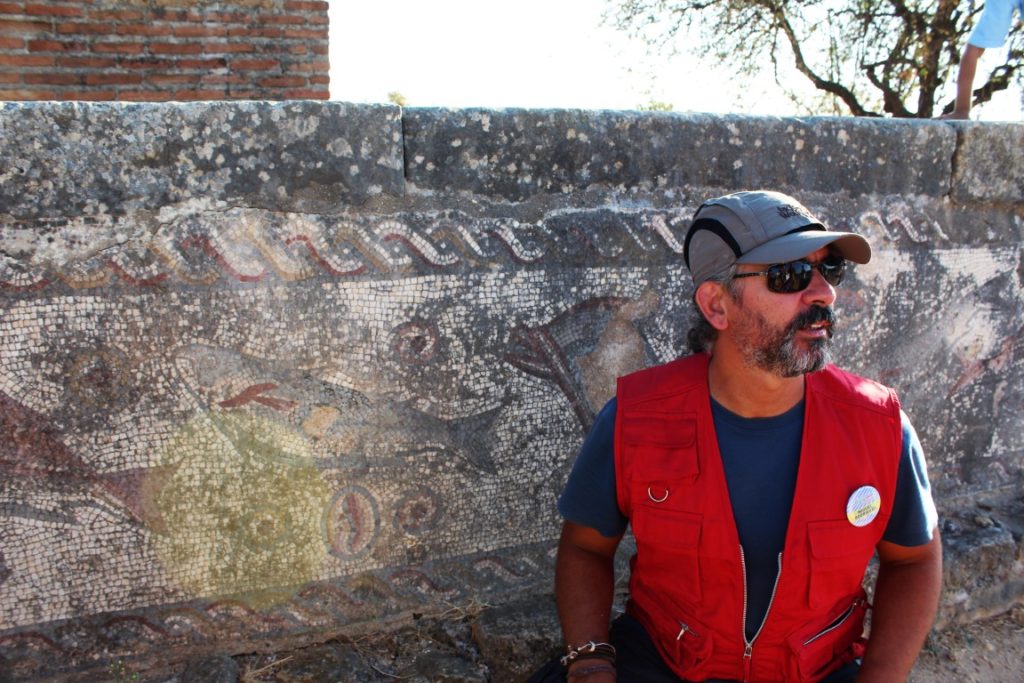
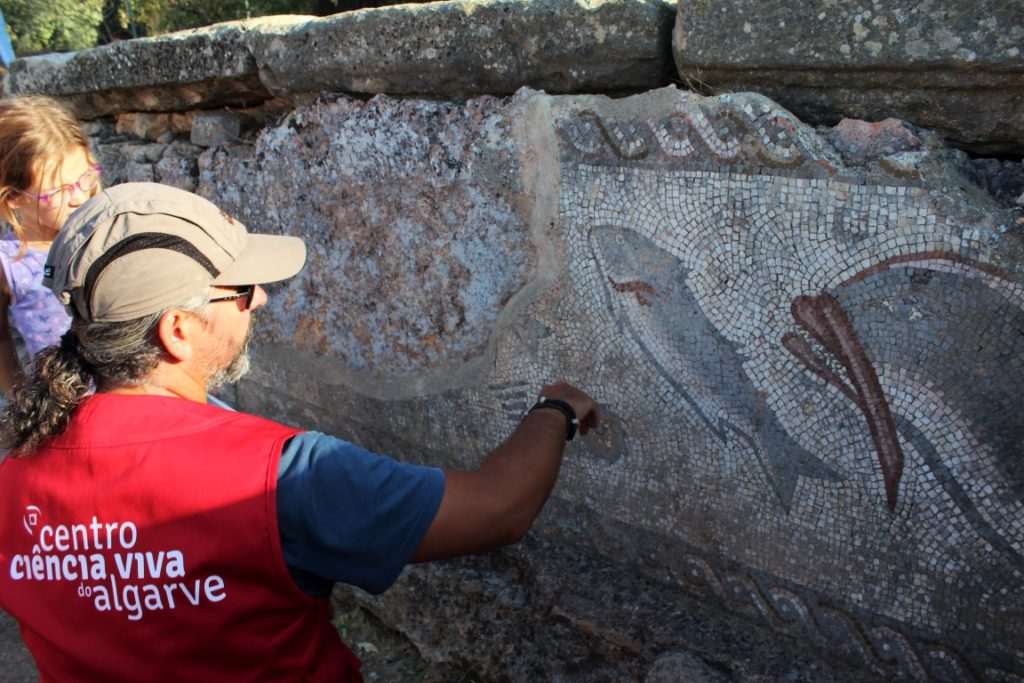
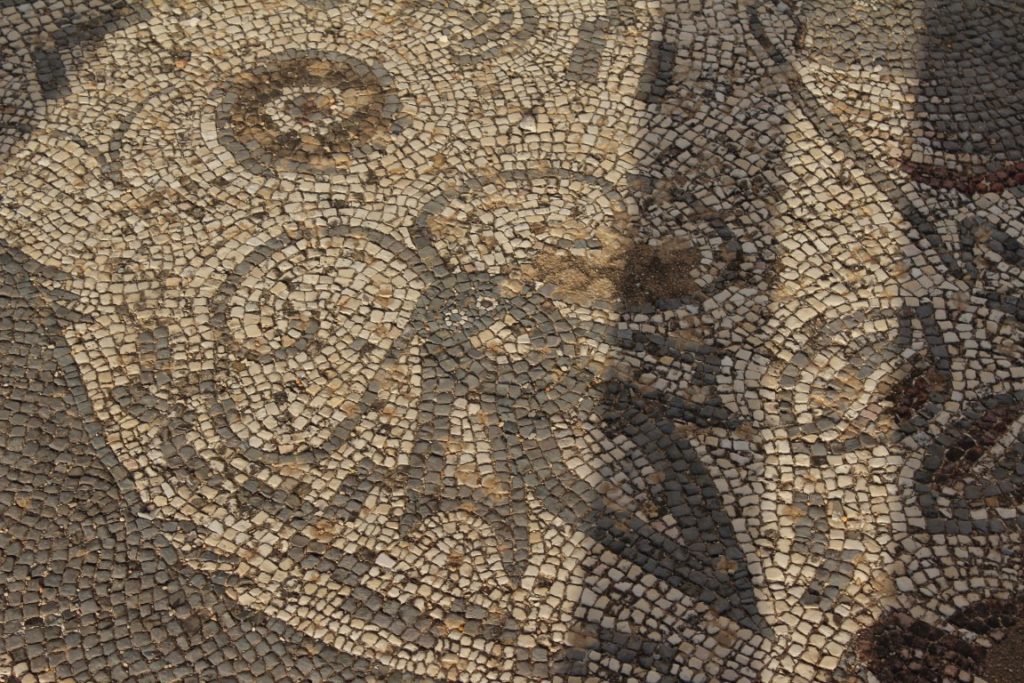
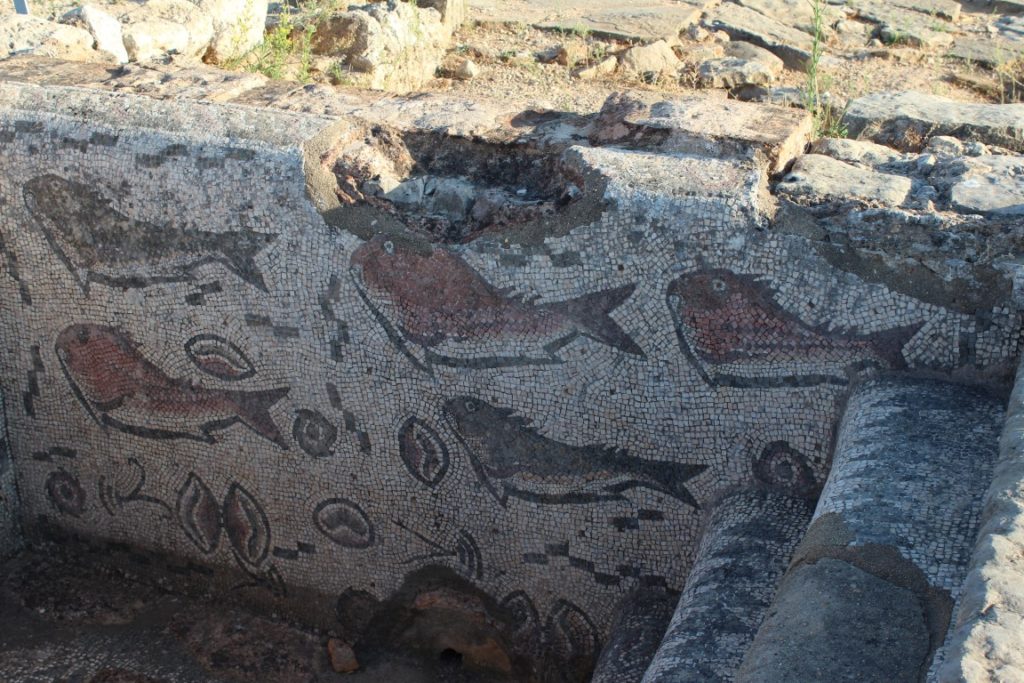


















Comments